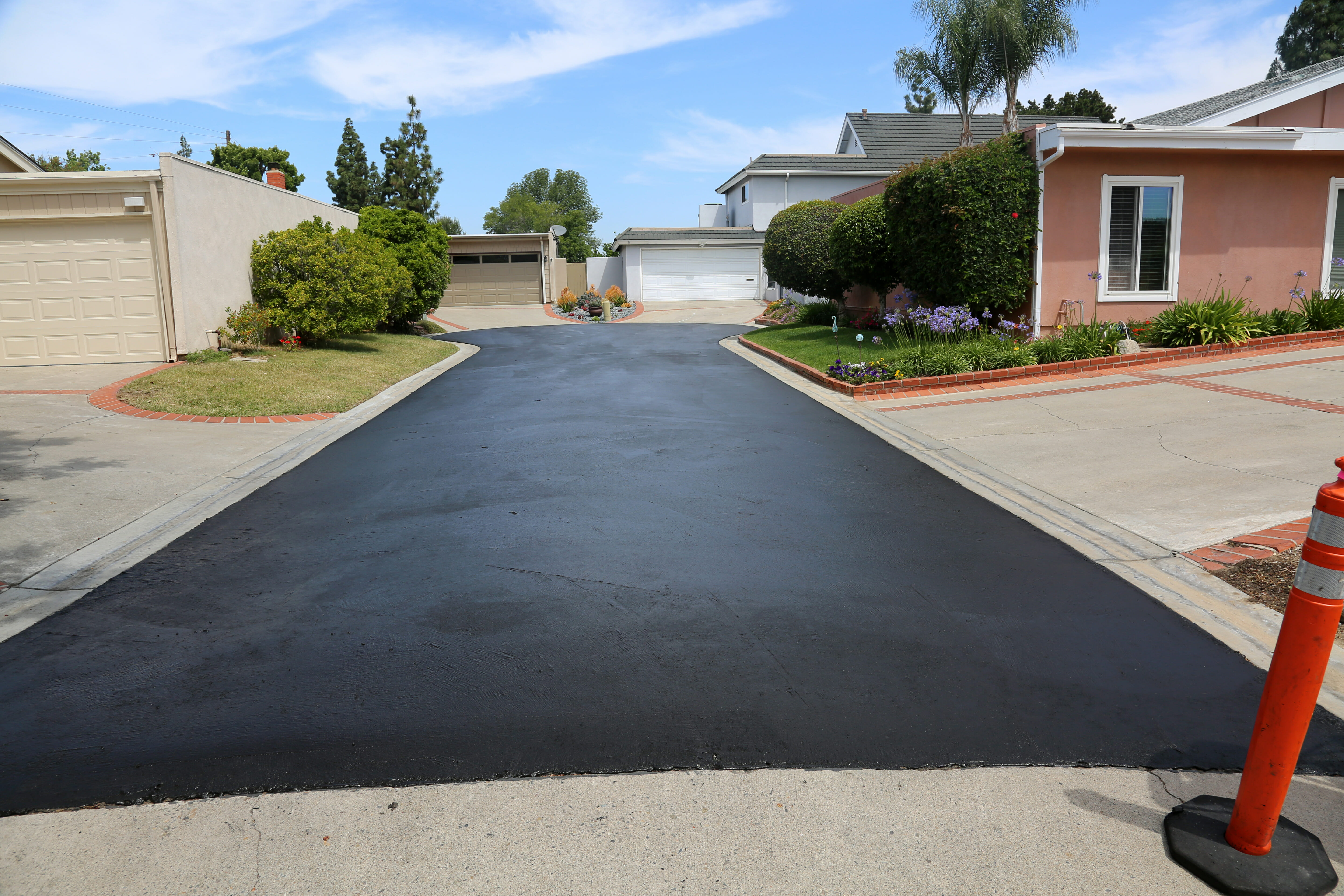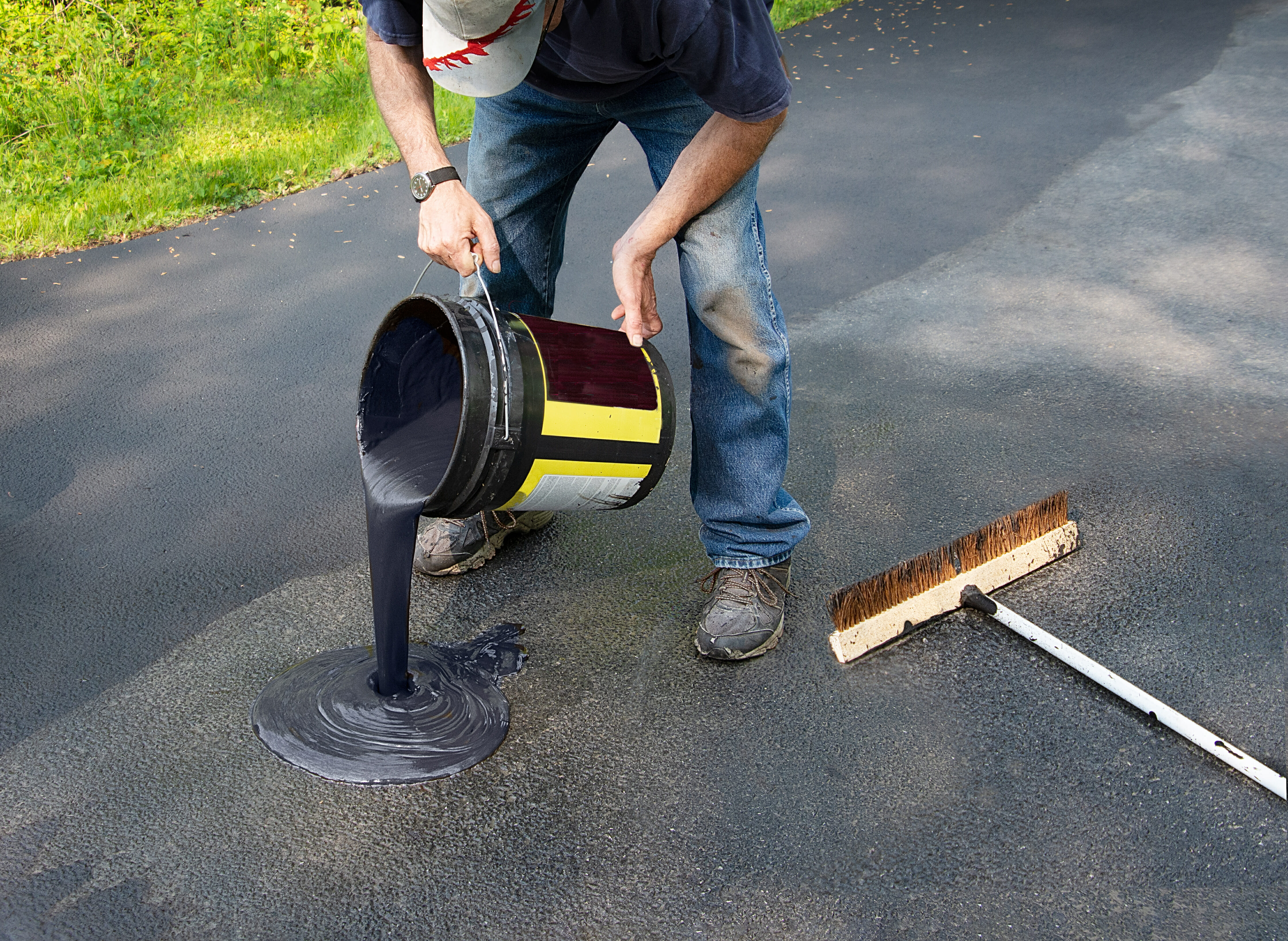Your driveway is often exposed to relatively harmless elements like rain and dirt. But as the seasons change, so do weather conditions, many of which can pose a significant threat to the condition of the asphalt. Sealcoating is a popular and effective technique used for year-round driveway protection. Let’s take a look at how it works!

Your Driveway’s Composition
To understand the true impact of the sealcoating process, we must first look at what driveways are made of. Asphalt itself is comprised of aggregates and binding agents that form a smooth mixture that, once hardened, provides a durable but elastic driveway surface. The elasticity is helpful because it allows the pavement to expand and contract when necessary. However, this flexibility can be seen as a downside to asphalt in certain conditions. Another common issue with asphalt is that its structure is easily degraded by excessive water, salt, and petroleum products like motor oil and grease.
Sealcoating 101
What is it made of?
The sealant used to complete this process is a mixture of tiny particles, like sand, and a liquid that is typically a mixture in itself, consisting of water, mineral fillers, and dissolved asphalt.
What does it do?
The main benefits of sealcoating are that it helps prevent pavement cracks, hinders premature wear to asphalt, minimizes the effects of harsh weather conditions, and provides a smoother and more attractive surface. In some cases, it can fill existing cracks if they are very small and on the surface of the driveway.
How is it applied?
First, your pavement is cleared of dirt, stone, and other debris. Existing oil marks on the asphalt are then treated with heat to remove them from the surface. If your driveway has cracks at the time of sealcoating, they will be filled with special crack sealant and sand in order to promote adhesion to the sealcoat. The sealant is then poured and a large brush is used to spread and smooth and even layer over the asphalt . The driveway will be ready for gentle use after about 48 hours of curing time.

When is the best time to sealcoat?
It’s highly recommended that homeowners wait until at least one year after a new driveway has been installed to start thinking about sealcoating. Summer is the best time to seal a driveway since temperatures are high, humidity is low, and the combination of the two provide ideal curing conditions for the sealant. Sealcoating shouldn’t be a one-time thing, either. In order to maintain the strength and prevent the deterioration of your driveway, you should ensure the sealcoat is applied once every 2-5 years, depending on the frequency and type of traffic your driveway gets throughout the year.
Hiring a Professional for Driveway Sealcoating in Maryland
Avid DIY-ers might be tempted to tackle this project on their own, but fair warning: Many store-bought sealcoat products are formulated so that they will hold up on store shelves for long periods of time, which can diminish the quality of the product. The best sealcoat for your driveway is one that is custom-mixed and applied by a professional. 1-855-GOT-PAVING offers affordable sealcoating and a variety of additional paving services. Contact us today to learn more!



